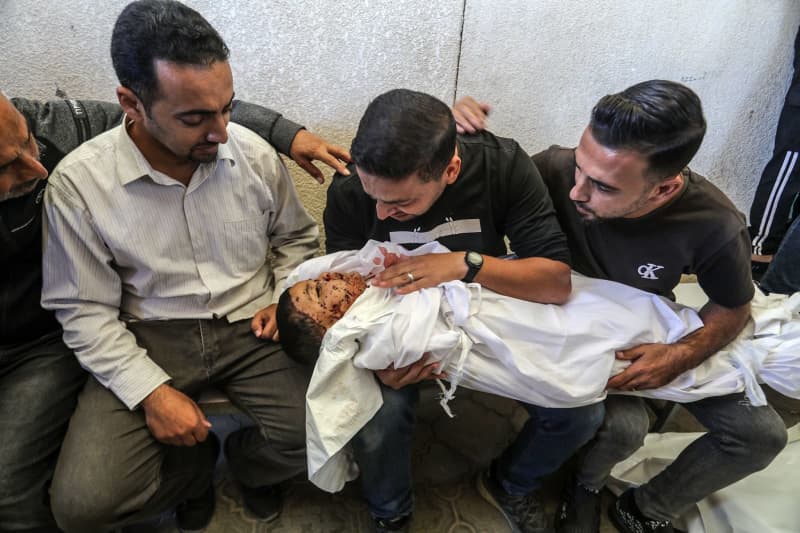The humanitarian crisis in the Gaza Strip has reached alarming proportions, particularly concerning the health and well-being of children caught in the conflict. According to reports from the United Nations, the inability of ambulances to transport severely injured children to hospitals outside Gaza has resulted in many preventable deaths. James Elder, a spokesperson for UNICEF, highlights the harrowing reality that children who survive intense bombardments are then left to succumb to their injuries due to bureaucratic obstacles and insufficient medical infrastructure. The situation is dire, with these vulnerable individuals facing additional suffering instead of the emergency medical care they desperately need.
The evacuation of injured children has plummeted dramatically, now averaging fewer than one child per day since the closure of the Rafah border crossing in May. Elder emphasizes the grim fate awaiting those who are injured, trapped in a cycle of indifference where bureaucratic processes fail to prioritize their urgent medical needs. This stagnation in medical evacuation is not merely a logistical issue; it reflects a broader systemic failure that disregards the humanitarian rights of the most vulnerable, in this case, the children of Gaza. The children, who are already living under extreme conditions, now face the added threat of death from injuries that could be treatable under normal circumstances.
The toll of the ongoing conflict is further illustrated by estimates from the World Health Organization (WHO), which states that between 12,000 and 14,000 patients across all age groups in Gaza require urgent medical care outside the territory. The WHO has called for the re-establishment of medical corridors, emphasizing that these accesses are critical for saving civilian lives amid the chaos. The lack of an effective medical evacuation system has compounded the suffering of those in Gaza, leading to a public health crisis where the sick and wounded are left without adequate care or hope for recovery.
In the midst of this humanitarian catastrophe, the Israeli military has continued its bombardment of the Gaza Strip while also deploying ground troops. This escalation is a direct response to the deadly terrorist attack carried out by the Palestinian militant group Hamas in October 2023. The conflict has not only resulted in extensive physical destruction but has also led to a significant loss of life. According to the Hamas-controlled health authority, tens of thousands of people have already died as a result of the ongoing military actions, illustrating the devastating consequences of the violence on the population.
The situation in Gaza symbolizes a profound humanitarian dilemma where injured civilians, specifically children, are caught in a conflict that seems to overlook their basic rights to health and survival. The combination of military action and the ensuing bureaucratic hurdles pose significant challenges for humanitarian organizations attempting to provide aid and support to those in need. UNICEF and WHO’s calls for action highlight the urgent need for international intervention to establish safe medical evacuation processes and ensure that injured individuals receive the care they require.
Ultimately, the plight of children in Gaza serves as a stark reminder of the indiscriminate nature of conflict and its capacity to devastate the most innocent among us. As international bodies struggle to address the crisis, the voices of those affected must be amplified, demanding accountability and action to protect the rights and lives of vulnerable populations. Without immediate and sustained intervention, the ongoing tragedy in Gaza threatens to claim even more innocent lives, particularly those of children who have already endured unimaginable suffering.

